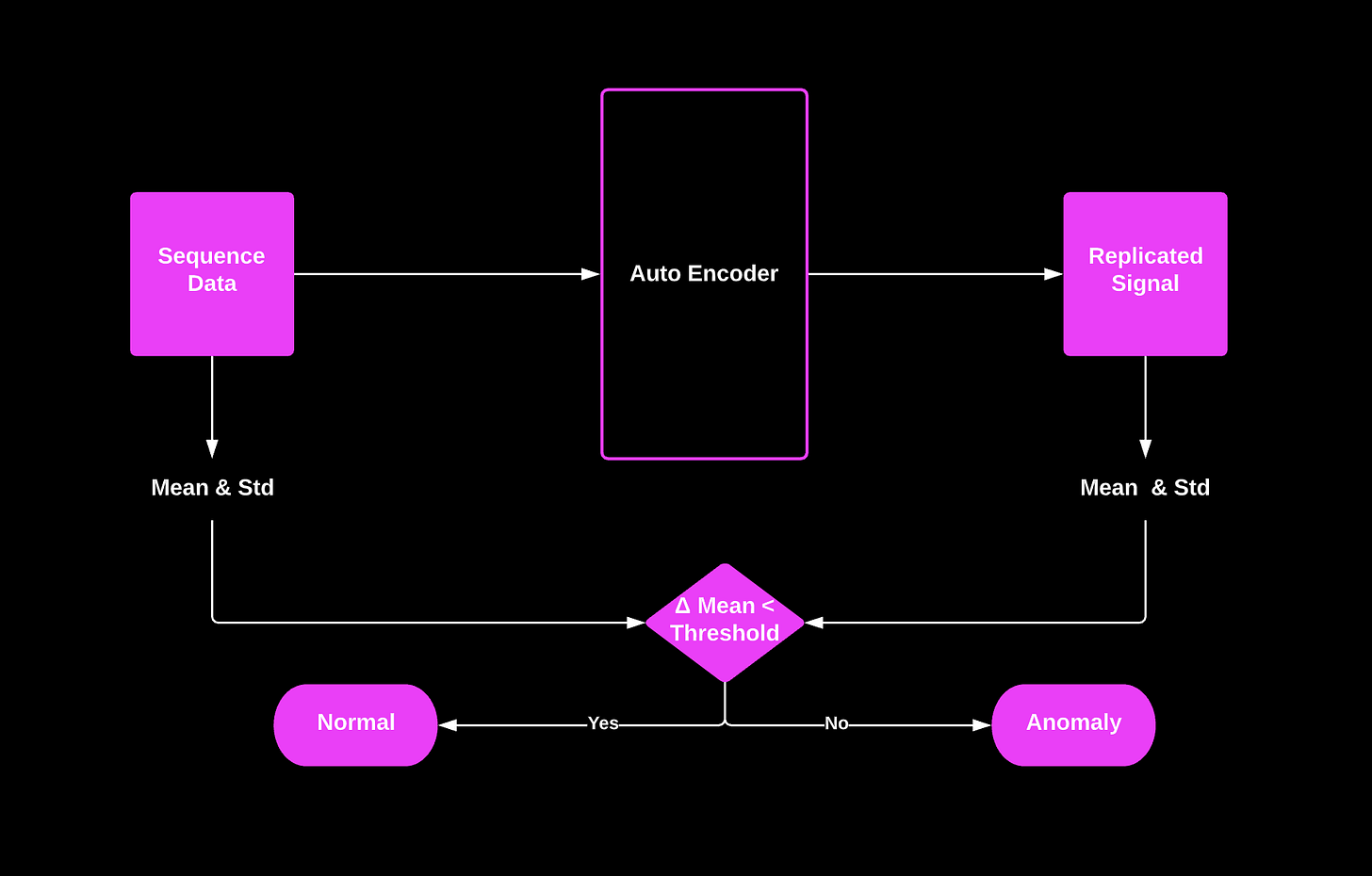Last time on High Seas, we talked about the need for predictive maintenance in the maritime and about using anomaly detection for that purpose. In this post, we describe how to leverage autoencoders for anomaly detection. Next week, we will build it together using Rune!
Autoencoders for Anomaly Detection
One technique for anomaly detection is to use a class of ML model architecture called Auto Encoders. Autoencoders are models that are trained to predict the original input. This is particularly valuable as this is a way for the model to learn the distribution of “normal” signals. Anomalies are detected when the autoencoder is not successfully (within a threshold) able to replicate the original signal.
Once trained the model can be used to evaluate new data coming in. Anomalies are detected when the new data are too “different” from the previously experienced data (measured by mean and std differences).
The Runefile can implement this whole process as a simple graph:
Demo!
In order to demonstrate this idea, we show a Raspberry Pi with an accelerometer taped to a fan and trained an anomaly detection model on data for a one-speed setting.
The predicted anomaly score is then used to turn on the green, yellow or red LED based on how high the fan speed is. It is pretty good at detecting other speeds or an obstructed airflow.
Here is what it looks like hooked up to a fan!
Next time, we will build the proc blocks and deploy the model to the Runic-Mobile app!
You can find Runic mobile app on app store - its free for anyone to download and test their Rune apps or play with the existing Runes we have built. Download and give it a try!
Join our Community:
Twitter @hotg_ai and @hammer_otg | LinkedIn | Discord | Discourse






